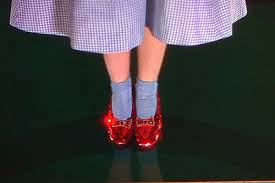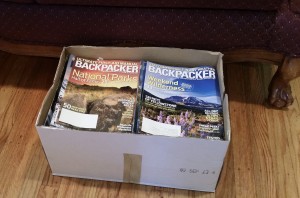 Selling your home? Put your best foot forward from the very start!
Selling your home? Put your best foot forward from the very start!
“You never get a second chance to make a first impression” are words of advice often attributed to Will Rogers. If you are planning to put your house on the market, now is the time to take heed.
The Facts
Putting in the time and money before listing a house pays off – literally. The more time your home spends on the market, the more it will cost YOU. Alternatively, the quicker the sale, the more money you walk away with. See some startling statistics on the benefits of home staging on realestateagentu.com.
Starting off on the right foot is worth more than you may have thought. Sure, you may be able to sell your home “as-is”, but if you are hoping to get the highest value, putting in the extra effort prior to listing it is a must.
What can you do to quickly prepare your home for sale? Here are three things to tackle.
1. De-clutter and Clean
De-cluttering and cleaning are two different things and they BOTH need to be done. Barbara Ballinger, author of several books on real estate, architecture and remodeling, warns “Many buyers equate clutter with messiness and disrepair, and they may quickly move on to the next listing.” If you want folks to know that your home is not going to be a headache or money pit for its next owners, make it shine! I know that you use your toothbrush every day but your buyers don’t want to see it. And sure, the dryer lint gets all over the top of the dryer. You have kids – of course there is stuff around! But trust me: Clear out the clutter, put things away, store extra stuff and clean (or hire house cleaners) before the first showing.
2. Downsize and Organize
Step it up a notch! Do you want to really make an impression that will put your home ahead of the one down the street? Downsize and organize. Your stuff may be out of sight at first glance. But the minute a closet is opened (and closets will be opened), buyers might be concerned about a lack storage space. According to Realtor.com, “Even if your house is clean, having things crammed in every nook is a visual turnoff.” This is the time to pack up out-of-season items and extra decor for a while. Don’t overlook the furniture in this process. The more floor space that can be shown, the larger your home will look and feel.
3. Odors and Fragrances: Yes or No?
How your house smells makes a visceral impression on home buyers. If they walk in and it smells like Mom’s apple pie, it can help them feel “at home” and make the house more attractive. If they smell cat, dog or last night’s fried chicken, it may be a turn-off. Many people are sensitive to odors. Even scents that you love might turn them off. While your home is on the market, avoid frying food, wearing strong perfume or lotion, and using strong-smelling cooking spices. Since you may be “noseblind” to the regular smells in your home, ask a friend, neighbor or your real estate agent to give you honest feedback about any odors they smell when they enter. A few drops of cinnamon, lavender or citrus essential oil can help.
Show buyers that your home is worth the value of your asking price and they will clamor to be the next owners!
 Relocation is one of those infamously “stressful” times of our lives. Even those of us who are veterans will admit to the fact that the sheer amount of facets that need to be managed during a move adds some level of anxiety.
Relocation is one of those infamously “stressful” times of our lives. Even those of us who are veterans will admit to the fact that the sheer amount of facets that need to be managed during a move adds some level of anxiety.
Whether moving near or far, change is part of the package – new people, new schools, new jobs, new neighborhoods, new neighbors and yes, a new home.
My husband’s corporate job moved us (a family of five) around the U.S. for a period of over 20 years. I realized from the very beginning that this would be a way of life for our family for quite some time. In order for us to not only keep our sanity but actually enjoy the adventure, I needed to have a plan. Essentially, my plan developed from taking a step back and seeing the big picture. I asked myself:
By answering these questions, I was able to prioritize the steps of our move and create a repeatable process to carry us through each successive relocation. I hope that my answers might help you look at your own family’s needs in the face of one or multiple moves.
What will our nomadic life look like?
Truth be told, many a friend and family member worried aloud about how my children would fare growing up without the consistency of a hometown, schools and friends. I chose to envision a life that would be enhanced by our travels – my children would learn that people are people wherever you go, no matter how they look or sound. They would experience cities and environments rather than merely reading about them – things like walking on Mt. Rainier (an active volcano), battling to walk down Michigan Ave while leaning into the Chicago wind, and watching dolphins jump in the coastal waters of Florida. I shared my vision and excitement with the rest of my family and let them know how lucky we were!
What can or will change?
Almost everything! As far as living spaces were concerned however, the changes involved the size and number of rooms and the amount of storage. Would the garage be large enough for cars, bikes and storage? Would there be a basement? Would the kids each have their own rooms or will they have to double up? Some changes were welcome, others less than desirable. Adding some creative storage and decorative accents always helped with the adjustment.
What can or needs to stay the same?
I decided that since all of our surroundings including most of the people would be changing, it would be important to preserve things that gave us “roots”. With each move I kept much of our décor the same, especially for the kids. I would hang their curtains right away and keep the same bedding. Those things changed at times when they grew out of them. We would have weekly letter-writing sessions in order to maintain relationships with family and friends. This had so many benefits: family time together, honing writing skills, honing relationship skills. I also made it a point to cook traditional holiday recipes so that we wouldn’t forget our family background and would feel connected on holidays when we couldn’t actually attend in person.
What will support each family member?
This is where organization really became essential. It is difficult to be successful, in anything and at any age, if your surroundings continue to change. Therefore, I would set up each home with consistencies. Kitchens were always arranged with table settings nearest the table and furthest from my cooking area so that kids could help and not be underfoot. Drawer items in kitchen, bedrooms and bathrooms were set up in similar order from house to house. Garage and laundry bins followed suit. Within no time, everyone knew where to find what was needed regardless of the new home layout.
Even though you may move often: embrace your life, be kind to yourself and your family and you can always be living at Home.
Click on the above title to learn more about the featured author.
 “Eye of newt, and toe of frog,
wool of bat, and tongue of dog,
adder’s fork, and blind-worm’s sting,
lizard’s leg, and howlet’s wing…” ~William Shakespeare, Macbeth
“Eye of newt, and toe of frog,
wool of bat, and tongue of dog,
adder’s fork, and blind-worm’s sting,
lizard’s leg, and howlet’s wing…” ~William Shakespeare, Macbeth
Reaching into the cupboard for canned pumpkin, you come upon what appears to be a rotting bag of potatoes you’d forgotten that you bought a couple of months ago.
You go down to the basement to pull out your holiday décor and realize it will take days to even get close to the area where it is stored – the boxes you can reach have been chewed into by…something.
You look under a bathroom sink for the ointment you haven’t used since last year’s blister you got while raking and you discover what must be a leaking pipe (and a mass of soggy toiletries).
Just because you have not actively used a storage area for some time, doesn’t mean that it has remained unchanged in your absence. Storage spaces like basements, spare rooms, closets and cabinets can be easily ignored when organizing or cleaning. The items they contain do not present the issue of “visible” clutter. The door is closed and what is stored is not in anyone’s way. Besides, the everyday mass of new paper, gadgets and gizmos coming in that crowd our countertops are enough of a challenge. Who has the time to deal with what’s already stored? Right?
Well, unfortunately, what is out of sight and out of mind is not necessarily out of play in the functioning of our homes and lives.
We want to be able to use the storage that we have in order to be able to put away supplies, seasonal items, sentimental memorabilia and the like, so as to keep them from impinging on our daily living. However, if we continue to shove new items in, we can end up pushing older items back, back, back into the dark recesses known only to the Boogieman. Therefore, an occasional survey of storage spaces can keep them functional and friendly. And, although I doubt you’ll need worry about coming across any ingredients in Shakespeare’s brew, you may want to be prepared for the unexpected when venturing to take-on one of these areas.
If you’ve seen signs of bugs or rodents, consider bringing in an exterminator first and holding off for a week or two on the organizing. If there’s a leak that you cannot find or fix yourself, call a plumber sooner rather than later. Unaddressed leaks and critters can do damage to your health and your home, not to mention your wallet. Take care of them before they turn into a caldron full of trouble.
Let the witches and goblins that ring your bell for candy be your only scary surprise this fall season!
Click on the title above to learn more about the featured author.
 Is this the year you’re planning to make your big move? Have you been saving to buy a home? Thinking about retiring and downsizing? Planning on a job change? Want to move closer to the grandkids?
Is this the year you’re planning to make your big move? Have you been saving to buy a home? Thinking about retiring and downsizing? Planning on a job change? Want to move closer to the grandkids?
Whatever the reason, there are things you can and should assess and address. One big consideration is the cost. Between packing materials, moving trucks, mileage and manpower, a relocation can run anywhere from 2- to 10-thousand dollars. While some pull it off on a shoestring and others exceed that 10K mark, it is most certainly a costly venture. So what can you do now to identify and avoid unnecessary expenses?
One thing is to take a discriminating look at what, in fact, will have to be moved. This small box of magazines weighs more than 40 lbs! At an average charge of $.50 per pound, that’s $20 (and that’s not even taking into account the labor charge for loading and unloading it). An online subscription to this Backpacker magazine is only $27…for 3 years! Are you sure these magazines, (broken printers, outgrown bikes, etc.) are worth that much to you?
Save your sanity and your budget by lightening your load now. Here are some easy target areas:
Want to know how much you’ve saved by being prepared in advance? Step on the scale with each bag or box you remove and keep track in a notebook or on your cell phone.
Whether you are using a moving company or hauling the load yourself, more stuff means more weight, more time and, bottom line, more money. Since costs incurred in any move include volume, weight and time, the less that is spent on packing and hauling your possessions, the more there will be for other discretionary expenses like unpacking, cleaning, window treatments or furniture updates.
Click on the title above to learn more about the featured author.
Trying to know everything about the Internet is as impossible as reading every book ever written. Like the spooky spider webs (real and synthetic) that accent our autumn décor, the fingers of the world-wide-web stretch and reach into sometimes unexpected corners of our lives. Schools, grocery stores, medical offices, places of employment and social groups – it is hard to find areas of life that are not touched. Yet, while technology races to manage our world, how well are we managing technology?
No matter where you find yourself in this digital age — ahead of the curve, just keeping up, or lagging behind — step away from the shivers you feel about getting caught in the web. Here are suggestions of some free tools and applications that I, myself, have found useful. They have helped me create order and ease in different areas of my daily life.
When You Shop: If you keep your cell phone with you, use it to store your shopping lists. Simply take a picture of your refrigerator grocery list before leaving the house or have a family member text you a picture of it when you’re at the grocery store. Create your list in an “app” such as Remember The Milk. And toss all those plastic loyalty and club cards. Use an app called Key Ring and they will always be with you when you need them.
Appointment Management: Phone calendars are wonderful for helping keep track of appointments and deadlines. They even offer the ability to set alarms. Go a step further and set up a shared calendar for your family in Google so you can know who needs to be where and when.
Travel Help: Have you ever been traveling and needed to find a gas station, restaurant or restroom? Don’t want to end up in a less than desirable location? Use the Yelp app to find something local and reviewed by others. Want to catch a movie on the fly? Try the Flixster app to find what’s playing now in your current location.
Files at Your Fingertips: Whether used for business or not, this can be more handy than you might think. Try creating a medical file in Evernote or Dropbox with snapshots of test results, medications and procedures. Bring an iPad or tablet to your doctor appointments and pull them up so your doctors can scroll through them easily. Similarly agendas, contact lists, and meeting notes for your association or social club meetings can be saved online. Even if you prefer bringing printed copies, storing them in Google Drive is a great backup plan. If you get into a bind and are caught without the printouts, you can log in to your Google account and access the notes on your phone or tablet without having to stop home.
I challenge you to choose one new techno-solution this month and see if it can help you streamline an aspect of your life. Don’t wriggle helplessly in a web constructed by someone else. Use technology to create your own web of control and order. Replace your fear of the Internet by spinning a web of your own design.
 Here are five ways to freshen up your home for spring:
Here are five ways to freshen up your home for spring:
Bedding-blitz As you prepare to leave colder days behind, get ready to pull out lighter blankets and sheets. Refresh blankets that come out of storage by fluffing them in the dryer with a dryer sheet. Remove heavy blankets and flannels from beds to clean and store. This is also a good time to wash the mattress covers and give the mattresses a flip. Lighter, brighter spring-fresh bedding is sure to brighten everyone’s mood!
Counter-attack Throw open the kitchen and bathroom windows and take a look at your counters. The fresh air will help energize you while you remove all items and give the counters a good wipe-down. Throw out any trash or items you don’t need and put away anything that has wandered out of its appropriate home. Return to the counter only those things that you absolutely must have out or that make you happy.
Pantry purge During our winter hibernation we tend to stockpile supplies. Cupboards can become stuffed with soups, cocoas and comfort-snacks. As this happens, other food items get pushed out of sight. Set aside an hour on a nice spring morning to empty out a shelf or two at a time, wipe them down, discard outdated or unwanted food items and reorganize what’s left back onto the shelves.
Sew or go Do you keep a sewing or ironing pile? If you do, make sure that what is in your pile has not been there longer than 6 months. If it has, it is likely that it may not fit, will be out of style, or will no longer be something that you think would be worth the effort. Now’s the time to sew or go! Pick an evening and an interesting TV show and get the ironing and sewing done. If you’re not going to do it – let it go. It will only sit there and make you feel guilty if you don’t. And, no one wants to feel bad on a sunny day!
Shoe-review The warmer days of spring and summer will mean a change of shoe style. Take time to gather any and all of your shoes together. Separate cold-weather shoes from warm. Before storing shoes you won’t wear again until fall, try them on. If they don’t fit comfortably or you don’t like them, this is the time to donate or toss them. If any need cleaning or repair, get it done now, before storing. Next, look at their sunny day counterparts and go through the same process. If you find that your favorite sandals are broken or that those cute open toe shoes you bought last summer don’t really fit right, get rid of them. Take note of any shoes you may need to add to your shopping list for replacement to complete your wardrobe. Finally, make sure each member of your household has adequate shoe storage.
Happy Spring!